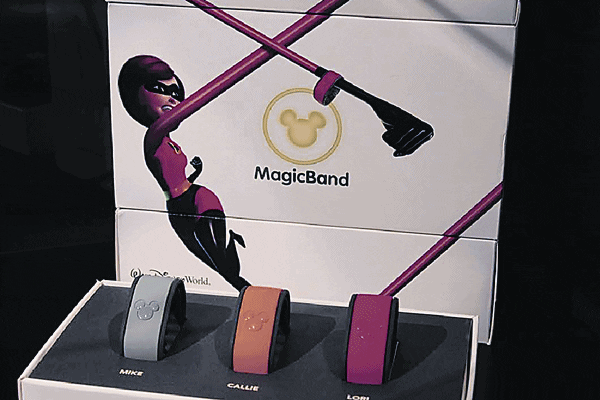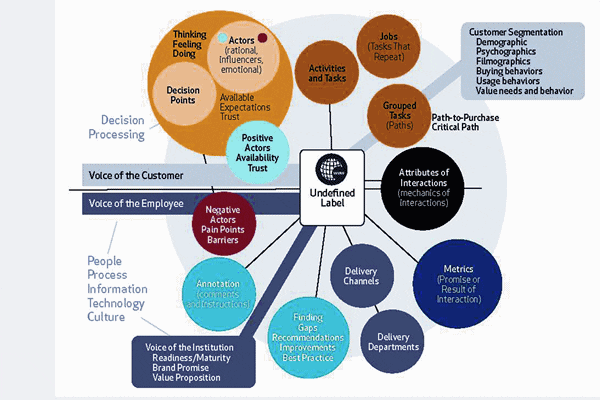The digitalisation of travel
In order to leverage technology to transform and create great customer experiences, travel businesses must understand what customers currently expect of them and accurately predict and prepare for what they will expect in the not-too-distant future. Excerpts from a PhocusWright report
The benefit of digital transformation to both travellers and the travel industry cannot be ignored. According to a World Economic Forum report, between now and 2025, “digitalisation in aviation, travel and tourism is expected to generate benefits valued at US$ 700 billion for customers and wider society, while at the same time creating up to US$ 305 billion in increased industry profitability.”
Meeting the demands of digital transformation and customer experience can be, however, a slippery slope. With each transformative change – from nuanced to leapfrogged – customers come to expect more from their experiences. The bar gets raised, delight gets heightened, while customers’ patience and tolerance for sub-par experiences diminishes.
Travel can be especially affected, since choice and competition abound along every phase of the customer journey. With travel’s first digital transformation, the human travel agent suffered. But something happened when the agent was removed from the equation – something the industry now realises it must address. To cite Expedia president and CEO Mark Okerstrom’s statement during the company’s October 2017 earnings call: “We will become much more customer-centric, putting the A back into OTA.”
Today’s travellers want mobile-first enabled experiences. They want easy, immediate answers and solutions to their problems. They’re curious about home-sharing, short-term rentals, and last-minute deals. They expect personalised experiences. But they also need to trust that travel providers will protect their sensitive personal data.
Customer journey mapping
The customer journey is generally thought of as a lifetime relationship with a customer, from the moment the customer becomes aware of the brand, until the time the customer is no longer a customer. The fragmentation of the traveller’s entire journey makes it even harder to understand and control, because the journey may involve so many disparate providers. In business travel, because corporate policy requirements about where to shop and book may lead to sub-optimal preferences with respect to travellers’ choices, analyzing their customer journey and experience may be even more difficult.
The process of describing and defining customer journeys is called ‘mapping’. Mapping is a tool to diagnose and understand where your customer is across all experiences, to help you understand the gaps and opportunities to grow the customer relationship. It should be dynamic, constantly re-evaluated and continuously updated. Customer journey mapping involves several components:
Understanding your customers. In travel, this doesn’t just mean leisure versus business versus group customers; it means breaking down customers into more meaningful segments. Whereas a common technique to journey mapping by segmentation has been to create demographics-driven personas, travel’s unique variability lends itself better to mapping by scenarios instead. For example, consider the same individual who in one scenario plans a vacation for her family, and in another is a corporate executive administrator booking a trip for her boss. Her needs and expectations will be very different from one scenario to the next.
360-degree research. To build customer journey maps, seek insights from many sources. From within the company, involve representation from any department – online or off – that might touch the customer. In travel, that could mean call center representatives, desk clerks or agents, bellmen, housekeepers, flight attendants, reservation agents, restaurant servers, managers, marketers and tech support personnel. Externally, survey or interview past and present travellers, mine social media mentions and sentiment; do some mystery shopping. Some companies conduct anthropologic, ethnographic, and/ or deep data analysis; some even map their competitors’ customer journeys.
Building and interpreting journey maps. Once all the research data has been collected, the customer journey map-building process begins. It can be as manual and seemingly simple (but likely arduous) as putting each customer’s touch point on a sticky note. Alternatively, it can be flow charted with tools or even specific journey-mapping software. An organization’s complete journey map will likely be relatively complex.
At the end of the exercise – which can take 10-12 weeks or more initially – the result should reveal the current state of the customer journey. The process typically identifies ‘moments of truth’, during which travellers make key decisions such as their destination selection or where to stay. It should also reveal common pain points to create a vision of the ideal future state of the customer journey, and help build the road map – the strategy – to move from current state to future state. The strategy should be one that plans for this process to be an evolution, not an overnight success. The desired future state may take up two years to attain.
Digitally transforming customer experiences
Examples of digital transformation of the customer experience abound, ranging from radically disruptive (Airbnb, Uber) to experimental (mixed reality, or Aruba’s Happy Flow, which uses biometrics to process passengers without any documents). In today’s mobile-first world, digital both informs and creates travel customer experiences. Smartphones empower travellers to capture and share literally every leg of their journey, from photo images to live posts, reviews and opinions. In addition to providing web – like browsing and booking experiences, smartphones now act as cashless wallets, entrance tickets and door keys.
At the same time, these connected devices also capture and transmit vast quantities of data in real time. This data, especially when married to legacy data, can enlighten, influence, authorise and personalise the traveller’s experience through machine learning, predictive analytics and artificial intelligence (AI). This big data and the tools to harness it can be used to improve the customer experience in many ways. The focus of digital transformation of the traveller’s customer experience revolves around several recurring objectives:
- Facilitated, frictionless interactions.
- Communicating how, when and by preferred means, including mobile apps, chatbots, natural voice recognition assistants, and messaging.
- Personalisation – subtle and overt.
- Alleviating pain while improving wonder and delight.
- Creating and reinforcing loyalty and positive brand sentiment.
- Planning for millennial and digital native travellers, whose needs, loyalties and expectations are very different than previous generations.
Examples of digitally transformed traveller customer experiences
To deliver the best customer experience possible, many of the travel industry’s new efforts attempt to tackle more than one of these objectives at once. For instance, the poster child of customer experience, the Disney company continues to innovate. An experience at its theme park is now built around its MagicBands, which the company describes as an ‘all-in-one device that effortlessly connects you to all the vacation choices you made with My Disney Experience’. The band grants access to the theme parks, unlocks Disney Resort hotel rooms, and buys food and merchandise. It also ‘adds a touch of magic to your vacation by unlocking special surprises, personalised just for you’. Delivering a complex, integrated experience like this requires intricate planning, engineering, and data-driven solutions, and companies must be bold to undertake it.
In an effort to attract Airbnb – loving millennials, the new luxury Public Hotel in Manhattan has stripped away traditional cost-increasing hotel services like a front desk, clerks and concierges, replacing them with self-serve tablet check-ins, floating staff, and free hi-speed Wi-Fi. The rooms may be sparse in amenities compared to traditional hotels, but come equipped with AppleTV, 12 power outlets, and bottled water. And what the hotel lacks, it makes up for in stylish hipster restaurant and bar offerings and a rooftop lounge.
In response to customer requests, Avis recently upgraded its mobile app to enable a more facilitated and pain-free car rental experience. The app allows renters to manage their entire experience from their smartphone. This includes: choosing the exact car they want; changing or upgrading vehicles with a simple swipe while at or near the lot; viewing their rental agreement; finding, locking and unlocking the car; locating nearby gas stations; calling roadside assistance; and even tracking the location of the courtesy shuttle bus.

Several airlines continue to push innovations to reduce friction and improve the customer experience at multiple levels. JetBlue, Southwest and Virgin Airlines are among those with self-serve check-in kiosks or mounted tablets. Ryanair hired over 200 IT specialists to overhaul its web and mobile solutions, one result of which was a new mobile app achieving 60 per cent faster booking times and airlines including JetBlue and Delta now provide flight attendants with hand-held devices to deliver passengers personalised information like loyalty points and connecting flight details.
To advance facilitated experiences through more communication channels, over the past year, online travel agency Expedia has rolled out several customer-centric tools and innovations. These include: bots for Facebook Messenger and Skype; a voice command “cheat sheet” for using Amazon Alexa, Amazon Dot or Microsoft Cortana to plan, book, or check on a trip; and a virtual reality experience atop the Seattle Space Needle for HTC devices.
The digital disruptors
These are the pure-play solutions, those new digital platforms designed specifically to improve or transform the customer experience along every stage of the traveller’s journey:
Dream – By typing in just a few descriptive or aspirational keywords, view destinations that fit what you might be looking for (LuxTripper). Or put on a pair of virtual reality goggles and ‘try before you buy’ (YouVisit).
Search – Using artificial intelligence, machine learning and predictive analytics, solutions like Hello Hipmunk do the legwork for the traveller.
Shop and Buy – WhereFor, for example, upends the way to search and shop for leisure travel. Instead of starting with a destination, the user starts with a budget. If the traveller finds an appealing hotel and flight package, she can book directly on the site.
Share – Social sharing platforms have matured, and few contenders have really disrupted the original disruptors (Snap might even be considered ‘mature’ at this point).
However, live streaming video is starting to come of age, and video suits travel well. Look for users to share their experiences using platforms like YouTube, TripAdvisor and Facebook Live, and on early-stage companies like Tout.
New digital-born solutions also fit into the emerging disruption management category. Some, like chatbots and automated communications platforms (Interactions, Dazzle) integrate into the travel company’s backend, generally to improve customer service.
Standalone ‘personal assistant’ solutions associate with an individual traveler, and provide even more services like booking and rearranging schedules. Niche disruption management solutions have also begun to arise like Freebird, which can quickly rebook a plane ticket if a problem arises. Roomstorm is a startup focused on finding accommodations for airline passengers and crews left stranded due to weather and other unpredictable circumstances,while Service and Airhelp help passengers get compensation for flight disruptions, cancellations or lost luggage.
Winning at customer experience
No doubt, digitally transforming the customer experience can be hard and expensive. Don’t, however, wait in watch mode for too long. Businesses did that in the early days of the Internet, and many of them are now gone. Don’t think of this transformation process as an expense, as the World Economic Forum forecast predicts it will generate not only more revenue but greater profitability.
Help travellers along. Have empathy. Teach them new technologies where they’re uncomfortable. Travellers in flight or on trains have a lot of time to kill. Encourage them to provide ideas and feedback. Make them part of the transformation process. Earn their ongoing trust so they will let you into their worlds and their data.
As the bar continues to be raised on the traveller’s customer experience, the more they will come to expect from providers. What will separate winners from losers will be those companies that are digitally aligned with their customers and can consistently deliver to those expectations. The pressure to continue to delight them is on.

